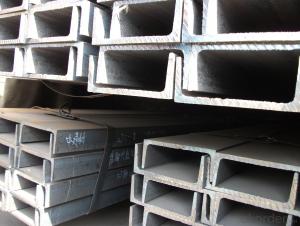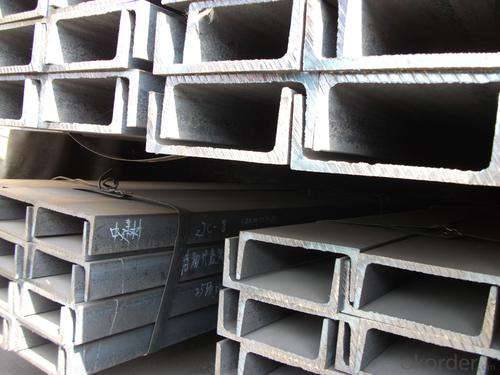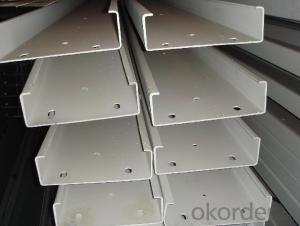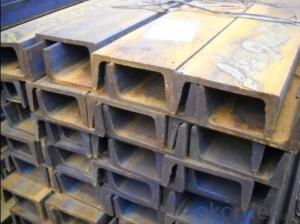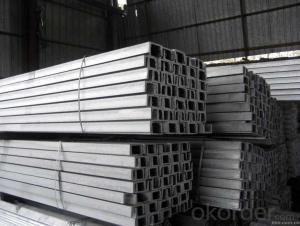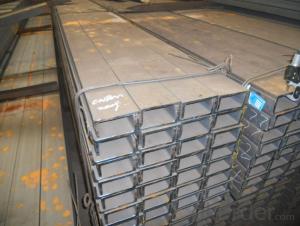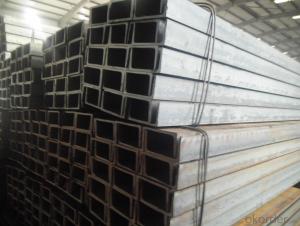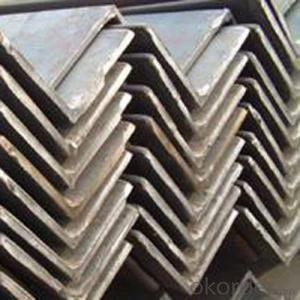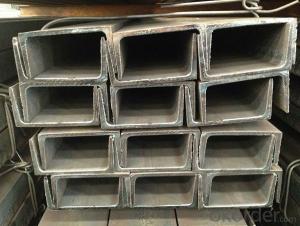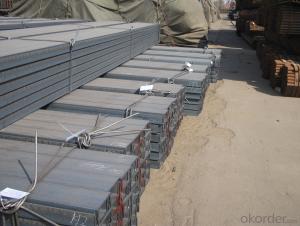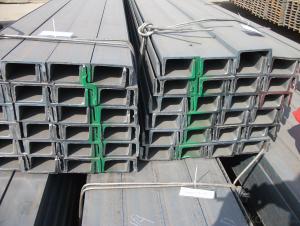JIS Standard Hot Rolled Steel U Channels
- Loading Port:
- Tianjin
- Payment Terms:
- TT OR LC
- Min Order Qty:
- -
- Supply Capability:
- 200000 m.t./month
OKorder Service Pledge
OKorder Financial Service
You Might Also Like
Specifications of JIS Standard Hot Rolled Steel U Channels:
| Original Place | Tangshan, China | Brand Name | Bridge |
| Standard | GB707-88, EN100025, JIS G3192, DIN 1026 | ||
| Sizes | 50mm to 300mm | ||
| Sales Volume/Year | 3000MT | ||
| Main Market | Middle East, Africa, Southeast As | ||
1.We are able to provide channel steel of top quality at attractive price.
2.Our products of channel steel have passed ISO9001:2008 Quality Management System Certification.
Usage/Applications of JIS Standard Hot Rolled Steel U Channels:
Channel Steel is usually used for building structure, vehicle manufacturing and other industrial structure and often used with i beam.
In details, the channel steel belongs to carbon structural steel which is applied to in the field of construction and machinery. The channel steel is usually used for arch-itechtural structure, and they could be welded in order to support or hang a vari-ety of facilities. They are also usually used in combination with I beam. Generally,the channel steel must possess perfect welding property, riveting property and mechanical property and so on.
Package & Delivery of JIS Standard Hot Rolled Steel U Channels:
The steel u channel will be packed in bundle with steel wire at each end of every bundle and color marking in order to help the customer to recognize his goods more easily at sight.
And steel u channel could be loaded into 20ft or 40ft container, or by bulk cargo. If the weight of each bundle reaches less than 3.5 mt, the loading by break bulk cargo should be choosed. When the weight of each bundle reaches less than 3mt, the loading by container should be choosed.
As for the transportaion from mill to loading port, the truck will be usually used. And the maximum quantity for each truck is 40mt.
All in all, we could do in accordance with customer's request.
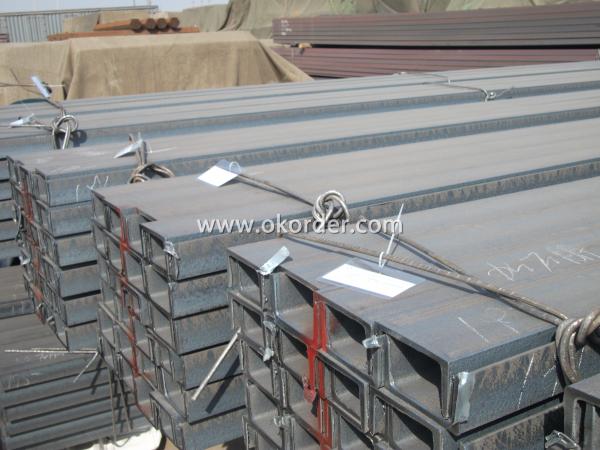
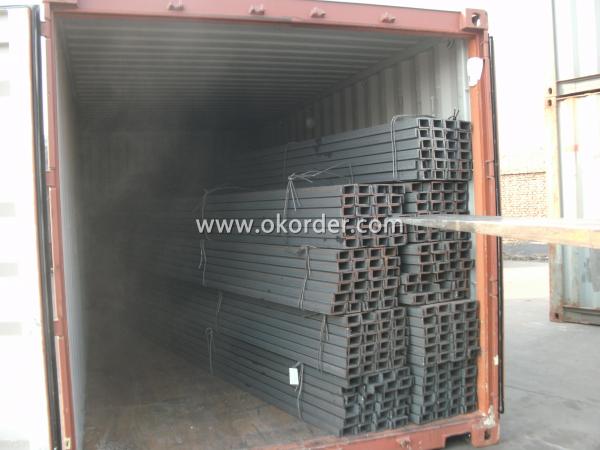
Production Flow of JIS Standard Hot Rolled Steel U Channels:
1.The steel billet shall be heated in the high temperature furnace.
2. The heated steel billet shall be rolled five to nine times with the aim of shaping the general figure of steel u channel.
3. The rolled steel u channel should be put onto the cooling bed to make the temperature low.
4. The steel u channel should be straighted on the straightener.
5. The straighted steel u channel will be cut into meters by saw, as per customer's requirements.
- Q: Can steel channels be used for solar panel mounting?
- Indeed, steel channels have the ability to be utilized for the purpose of mounting solar panels. Opting for steel channels as a mounting solution not only offers robustness and longevity, but also the capacity to bear the weight of the panels and withstand diverse weather conditions. Moreover, steel channels can be effortlessly tailored and adapted to meet the precise demands of the solar panel installation. They furnish a dependable base for the panels, allowing for installation on rooftops, ground mounts, or other structures. Nevertheless, it is crucial to guarantee the proper installation and anchoring of the steel channels to ensure the requisite stability for the solar panels.
- Q: Can steel channels be used in solar panel mounting structures?
- Solar panel mounting structures can indeed utilize steel channels. In construction and engineering projects, steel channels are frequently employed because of their robustness and longevity. When incorporated into solar panel mounting structures, they offer a solid and trustworthy framework to bear the weight of the panels. Steel channels come in various sizes and shapes, giving designers the flexibility to create mounting structures that can accommodate different solar panel sizes and configurations. They can be easily fabricated, cut, and welded to meet specific project requirements. By using steel channels, a sturdy and stable mounting structure is guaranteed, capable of withstanding environmental factors such as wind loads, snow loads, and extreme weather conditions. Moreover, steel channels possess a high strength-to-weight ratio, making them an efficient choice for solar panel mounting structures. They can support the panels' weight while keeping the overall weight of the structure to a minimum. This is especially advantageous for rooftop solar installations, where the mounting structure's weight needs to be as light as possible to prevent excessive stress on the building. In summary, steel channels are a suitable and commonly employed material for solar panel mounting structures due to their strength, durability, flexibility, and efficiency. They provide a dependable framework for securely mounting solar panels, ensuring their long-term performance and stability.
- Q: How are steel channels used in the construction of shopping malls or retail centers?
- Steel channels are commonly employed in the construction of shopping malls or retail centers for various purposes. These elongated and narrow metal beams, which have a "U" or "C" shape, offer several advantages in terms of strength, versatility, and cost-effectiveness. One of the primary applications of steel channels in shopping mall or retail center construction is for providing structural support. These channels can be utilized to establish the framework or skeleton of the building, ensuring stability and rigidity in the overall structure. Steel channels are renowned for their high tensile strength and ability to bear heavy loads, making them an ideal choice for supporting multiple floors, ceilings, and roofs. Another use of steel channels in shopping mall construction is for the installation of mechanical, electrical, and plumbing (MEP) systems. These channels can be used to hide and safeguard various utility lines, such as electrical cables, HVAC ducts, and plumbing pipes. By employing steel channels, these systems can be routed securely and systematically throughout the building, remaining out of sight while still being easily accessible for maintenance or repairs. Furthermore, steel channels can also be employed for constructing partitions and walls within shopping malls or retail centers. These channels can serve as studs or tracks, creating the framework for interior walls or dividing spaces. By using steel channels for partition walls, builders can create flexible layouts that can be easily modified or reconfigured as needed, accommodating the ever-changing requirements of commercial tenants. Moreover, steel channels are often used in the construction of mezzanine floors or elevated platforms within shopping malls or retail centers. Mezzanine floors can be added to maximize available space and provide additional areas for retail or storage purposes. Steel channels are used to construct the supporting structure for these elevated platforms, ensuring they can bear the weight of people, products, and equipment. In conclusion, steel channels play a vital role in the construction of shopping malls or retail centers by offering structural support, facilitating the installation of MEP systems, constructing interior walls, and enabling the creation of mezzanine floors. Their strength, versatility, and cost-effectiveness make them an essential component in contemporary commercial construction, allowing for efficient and durable building solutions.
- Q: How do steel channels contribute to moisture control in buildings?
- Steel channels in buildings can contribute to moisture control by providing a structural framework that helps prevent water leaks and moisture intrusion. These channels, usually installed along the perimeter of walls or ceilings, create a barrier that prevents water from seeping into the building. By effectively managing moisture, steel channels help maintain a dry and healthy indoor environment, reducing the risk of mold growth, structural damage, and ensuring occupant comfort and safety.
- Q: How do steel channels contribute to acoustic performance?
- Steel channels can contribute to acoustic performance by providing structural support for soundproofing materials such as insulation or acoustic panels. They help create a barrier that reduces the transmission of sound waves, preventing noise leakage and improving overall acoustic quality within a space.
- Q: What are the different methods for designing steel channels for seismic loads?
- There are several different methods for designing steel channels for seismic loads. These methods include: 1. Elastic Design Method: This method assumes that the structure remains linear elastic during an earthquake. It involves calculating the design forces based on the seismic coefficient and applying them to the channel using appropriate load combinations. The channel is then checked for strength and stability against these design forces. 2. Plastic Design Method: This method allows the structure to undergo plastic deformation during an earthquake. It involves determining the plastic hinges locations and calculating the design forces based on the expected plastic deformation. The channel is designed to have sufficient strength and ductility to resist these forces. 3. Yielding Design Method: This method assumes that the channel will yield but not undergo significant plastic deformation during an earthquake. It involves calculating the yield strength of the channel and designing it to have sufficient strength to resist the design forces. 4. Performance-Based Design Method: This method involves evaluating the expected performance of the structure during an earthquake. It takes into account factors such as the desired level of damage, the expected ground motion, and the importance of the structure. The channel is designed to meet the performance objectives, which may include limiting damage or ensuring occupant safety. 5. Code-Based Design Method: This method follows the guidelines and provisions specified in building codes and standards. It involves checking the channel against the specified code requirements for seismic design, such as the American Institute of Steel Construction (AISC) Seismic Provisions or the International Building Code (IBC). It is important to note that the selection of the method for designing steel channels for seismic loads depends on various factors, including the type of structure, the level of seismicity in the region, the desired performance objectives, and the applicable building codes and standards.
- Q: Can steel channels be used in wastewater treatment plants?
- Yes, steel channels can be used in wastewater treatment plants. Steel is a durable and corrosion-resistant material, making it suitable for use in environments with high moisture and chemical exposure. Steel channels can be used for various purposes in wastewater treatment plants, such as for conveying and directing the flow of water and wastewater, as well as for supporting and securing equipment and infrastructure. Additionally, steel channels can be easily fabricated and customized to meet specific design requirements and can withstand heavy loads and harsh operating conditions commonly found in wastewater treatment plants.
- Q: Are steel channels suitable for use in the construction of scaffolding systems?
- Yes, steel channels are suitable for use in the construction of scaffolding systems. Steel channels are known for their strength and durability, making them ideal for supporting heavy loads in scaffolding structures. They are often used as horizontal or vertical beams to provide stability and support to the scaffolding system. Steel channels also have high resistance to corrosion, which is essential for outdoor construction sites where the scaffolding may be exposed to various weather conditions. Additionally, steel channels can be easily fabricated and assembled, allowing for flexibility and customization in designing scaffolding systems to meet specific construction requirements. Overall, steel channels offer the necessary strength, durability, and versatility required for scaffolding systems, making them a suitable choice for construction projects.
- Q: What are the different load combinations for steel channels?
- Load combinations for steel channels depend on the specific design criteria and application. However, some common load combinations for steel channels include: 1. Dead Load: This is the constant load applied to the structure, including the weight of the steel channel itself, any permanent fixtures or equipment, and the self-weight of other components. 2. Live Load: This is the variable load applied to the structure due to occupancy, use, or temporary equipment. Examples include people, furniture, vehicles, or machinery. 3. Wind Load: This is the lateral force exerted by wind on the structure. It takes into account the wind speed, exposure category, height, and other factors specified by the applicable building codes or standards. 4. Snow Load: This is the additional weight exerted by snow accumulation on the structure. It considers the snow density, anticipated snowfall, and design factors provided by the relevant codes or standards. 5. Seismic Load: This is the force generated by earthquakes or seismic activity. The magnitude of the seismic load depends on the seismic zone, soil conditions, and the structural response to such events. 6. Impact Load: This refers to the sudden and dynamic loads that occur due to accidental events, such as vehicle collisions or equipment failures. The magnitude and duration of the impact load depend on the specific circumstances. 7. Temperature Load: This includes the thermal expansion and contraction of the steel channel due to temperature variations. It is considered for structures exposed to extreme temperature changes. 8. Combination Load: This involves considering multiple loads acting simultaneously or in combination with each other. Different load combinations are determined based on the governing design codes or standards applicable to the specific project. It is important to note that the specific load combinations and their respective factors may vary based on the design codes, project requirements, and the structural engineer's professional judgment. Therefore, it is crucial to consult the relevant design standards and guidelines to determine the appropriate load combinations for a particular steel channel application.
- Q: What does channel 150*8 mean?
- Channel specification.Standard Specification for channel steel, similar to I-beam, is expressed in terms of its main cross sectional dimension (mm)The waist height (H) * leg width (b) * waist thickness (d) is expressed as millimeters, such as 120 * 53 * 5, which means that the waist height is 120mm, the leg width is 53mm, and the waist thickness is 5mm
Send your message to us
JIS Standard Hot Rolled Steel U Channels
- Loading Port:
- Tianjin
- Payment Terms:
- TT OR LC
- Min Order Qty:
- -
- Supply Capability:
- 200000 m.t./month
OKorder Service Pledge
OKorder Financial Service
Similar products
Hot products
Hot Searches
Related keywords
